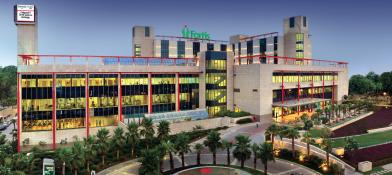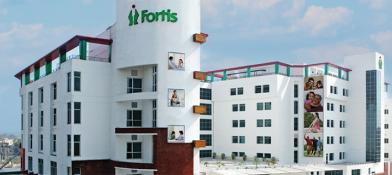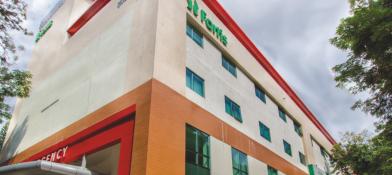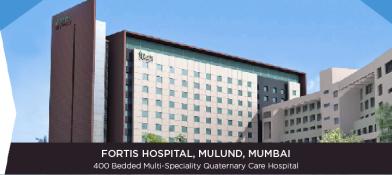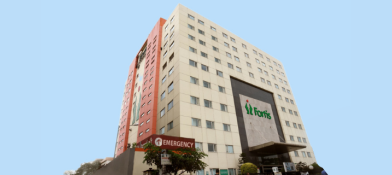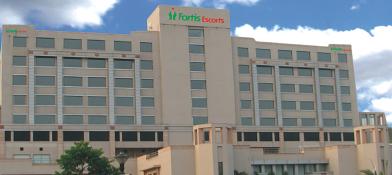Computed Tomography (CT scan)
What is a CT scan?
Computed tomography is predominantly referred to as a CT scan. A CT scan refers to a diagnostic imaging procedure that utilises a combination of X-rays as well as computer technology to generate pictures of the interior of the body. It shows detailed images of any portion of the body, comprising the bones, muscles, fat, organs and blood vessels.
CT scans are more detailed compared to standard X-rays. In case of standard X-rays, a beam of energy is focused on the body part being investigated. A plate behind the body part captures the energy beam variations post it passes through skin, bone, muscle, and other tissue. While much information can be collected from a regular X-ray, a lot of details about internal organs and other structures are not available.
In CT, the X-ray beam passes in a circle surrounding the body. This permits several distinct views of the same organ or structure and offers much greater detail. The X-ray information is transferred to a computer which interprets the X-ray data and shows it in two-dimensional form on a monitor. Novel technology and computer software make three-dimensional images possible.
CT scans may be performed to aid in diagnosing tumours, investigating internal bleeding, or assessing for other internal injuries or damage. CT can also be utilised for a tissue/fluid biopsy.
What happens during a CT scan?
CT scans may be done on an outpatient basis or as part of a patient's stay in a hospital. Procedures may differ based on his/her condition and physician's practices. Usually, CT scans follow this process:
- Patients may be asked to dress in a hospital gown. A locker will be given to secure all personal belongings.
- Patients should remove all piercings and leave all jewellery and valuables at home.
- If the patient is to have a procedure with contrast, an IV line will be started in the hand/arm for injection of the contrast media. For oral contrast, the patient will be administered a liquid contrast preparation to swallow. In a few situations, the contrast may be given rectally.
- The patient will lie down on a scan table which slides into the scanning machine's large, circular opening.
- The technologist will be in other room where the scanner controls are situated. However, the patient will constantly see the technologist through a window. Speakers inside the scanner will permit the technologist to communicate with and listen to patient. Patients may have a call button so that they can let the technologist know if they have any issues during the procedure. The technologist will always observe the patient and will be in constant communication.
- X-rays will pass through the body for a short duration as the scanner commences to rotate around you. The patient will listen to clicking sounds, which are normal.
- The X-rays absorbed by the tissues of body will be detected by the scanner and then transmitted to the computer. The computer will convert the information into an image to be interpreted by the radiologist.
- It is significant that the patient will remain very still during the procedure. Patients may be asked to hold their breath several times during the procedure.
- If contrast media is utilised for procedure, patient may feel few effects when the contrast is injected into the IV line. These effects comprise a flushing sensation, a salty/metallic taste in the mouth, a short duration headache, or nausea and/or vomiting. These effects generally last for a few moments.
- Patients should notify the technologist if he/she is suffering from any breathing problems, perspiration, numbness, or heart palpitations.
- When the procedure has been finished, the patient will be removed from the scanner.
- If an IV line is inserted for contrast administration, the line will be taken out.
- While the CT procedure itself induces no pain, lying still for the length of the procedure might cause mild discomfort or pain, particularly in the instance of a recent injury or invasive procedure, like surgery.
- The technologist will utilise all possible comfort measures and finish the procedure as rapidly as possible to alleviate discomfort/pain.
What happens after a CT scan?
- If contrast media was utilised during patient's procedure, patient may be monitored for a period for any side effects or reactions to the contrast, like itching, swelling, rash or difficulty breathing.
- If the patient senses any pain, redness, and/or swelling at the IV site post returning home following the procedure, the patient should notify the doctor, as this could indicate an infection or other form of reaction.
- There is typically no special type of care required post a CT scan. The patient may commence his/her usual diet and activities unless his/her doctor advises him/her otherwise.
Risks of CT scan
- The quantity of radiation used during a CT scan is considered minimum, so the likelihood of radiation exposure is low.
- Radiation exposure during pregnancy may lead to congenital defects.
- If contrast dye is utilized, hypersensitivity to the dye is likely. Patients who are allergic to or hypersensitive to medications, contrast dye, iodine, or shellfish should inform their physician.
- In few cases, the contrast dye can cause renal failure, especially if the person is consuming Glucophage (a diabetic medication).
Certain factors or conditions may interfere with the precision of a chest CT scan. These factors comprise, but are not restricted to the following:
- Metallic objects within the chest, like surgical clips or a pacemaker
- Body piercings on the chest
- Barium in the food pipe from a recent barium study
In summary, computed tomography (CT/CAT scan) is a non-invasive diagnostic imaging procedure that uses an amalgamation of special X-ray equipment and sophisticated computer technology to produce cross-sectional images (often known as slices) of the body, both horizontally and vertically. CT scans have an array of benefits that outweigh any minor risks.






